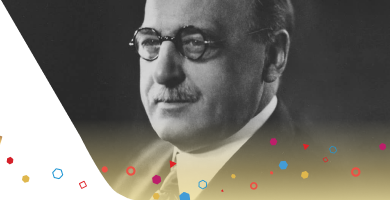Mead Johnson Heritage
Mead Johnson & Company was established by Edward Mead Johnson, Sr. in the year of 1905.
E. Mead was well-qualified to embark on this new venture, having been one of the founding brothers of the surgical-bandage company Johnson & Johnson.
In 1895, while still in business with his brothers, E. Mead acted on his growing interest in nutritional products and formed The American Ferment Company to manufacture a product designed to aid digestion. Two years later, he parted from his brothers to focus on this venture, re-establishing it as Mead Johnson & Company in 1905.
By friends and family alike, E. Mead was regarded as a man of vision. Where others saw only facts, E. Mead saw ideas and possibilities—and he invested himself in making them happen. He persevered, too, even during times of adversity and economic downturn. When World War I cut off the supply of his most important product ingredient, he moved his company hundreds of miles away from New Jersey to Evansville, Indiana. There, nestled among the cornfields of the Midwest, he rebuilt his business—almost from the ground up—struggling arduously for several years to overcome the challenges of starting over.
E. Mead's success and customer-understanding were rooted not only in his insights as a businessman but also in his experiences as a father. The life-threatening feeding difficulties experienced by his oldest son, Ted, inspired E. Mead to develop Dextri-Maltose®, a specialty carbohydrate product that became the company's first major success.
Ted grew up to play important sales and marketing roles in the company's future. E. Mead's son Lambert and grandson D. Mead carried his work even further. Lambert became the company's longest-serving president, leading the business from 1934 until 1955. D. Mead, Ted's son, succeeded Lambert, serving as president until 1968.
After Edward Mead Johnson, Sr. retired as president, he spent his remaining years doing the things he loved best: golfing, deep-sea fishing, and spending time with his friends and family. On March 13, 1934, at the age of 81, he died suddenly of a heart attack while dining with his wife and their guests.



